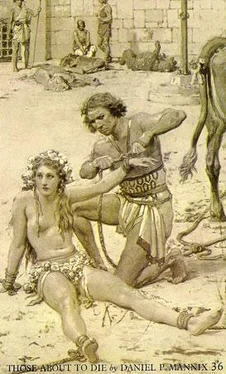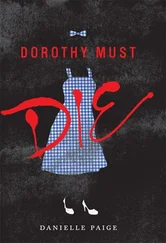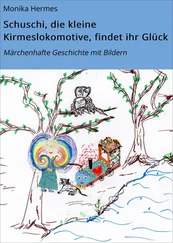Daniel Mannix - Those About to Die
Здесь есть возможность читать онлайн «Daniel Mannix - Those About to Die» весь текст электронной книги совершенно бесплатно (целиком полную версию без сокращений). В некоторых случаях можно слушать аудио, скачать через торрент в формате fb2 и присутствует краткое содержание. Год выпуска: 1972, ISBN: 1972, Издательство: Mayflower Books Ltd, Жанр: Исторические приключения, на английском языке. Описание произведения, (предисловие) а так же отзывы посетителей доступны на портале библиотеки ЛибКат.
- Название:Those About to Die
- Автор:
- Издательство:Mayflower Books Ltd
- Жанр:
- Год:1972
- ISBN:978-0583121347
- Рейтинг книги:4 / 5. Голосов: 1
-
Избранное:Добавить в избранное
- Отзывы:
-
Ваша оценка:
- 80
- 1
- 2
- 3
- 4
- 5
Those About to Die: краткое содержание, описание и аннотация
Предлагаем к чтению аннотацию, описание, краткое содержание или предисловие (зависит от того, что написал сам автор книги «Those About to Die»). Если вы не нашли необходимую информацию о книге — напишите в комментариях, мы постараемся отыскать её.
Those About to Die — читать онлайн бесплатно полную книгу (весь текст) целиком
Ниже представлен текст книги, разбитый по страницам. Система сохранения места последней прочитанной страницы, позволяет с удобством читать онлайн бесплатно книгу «Those About to Die», без необходимости каждый раз заново искать на чём Вы остановились. Поставьте закладку, и сможете в любой момент перейти на страницу, на которой закончили чтение.
Интервал:
Закладка:
There were other attractions. Betting ran so high that fortunes were won or lost in the circus within a few minutes, and only by betting could the ordinary freeman obtain wealth. Also, no matter how badly off a Roman might be, he had the satisfaction of knowing that he was superior to the poor wretches in the arena. Although few Romans cared for the low pay and rigid discipline of the army, they could still consider themselves real fighting men as they shouted advice and insults to the struggling gladiators below. Nothing delighted the Roman mob more than to have some visiting dignitary from a satellite nation get sick during the games and have to rush from the amphitheatre. The freeman would say with great satisfaction, "Those effeminate Greeks, they can't take the sight of blood like us Romans!" and turn to the next event with renewed relish.
The games—which eventually came to cost one-third of the total income of the empire and used up thousands of animals and humans every month—started out as festivals no more bloodthirsty than the average county fair. The first games in 238 b.c. featured exhibitions of trick riding, acrobats, wire walkers, trained animals, chariot racing and athletic events. There was boxing with soft leather straps over the knuckles that took the place of gloves. The militia staged a sham battle, and the crack cavalry corps, composed of rich young men mounted on thoroughbred horses and dressed in gold and silver armour, went through a drill. There were also horse races in which the riders had to jump from one horse to another in full gallop. Occasionally a pageant was held, such as the Siege of Troy, in which the wooden mock-up representing Troy was attacked by militiamen dressed as Greek soldiers and finally burned amid much blowing of trumpets and loud applause. An admission fee was charged by whoever was producing the show.
Later this sort of exhibition got much too tame for the Romans. The only one of the events to last was the chariot racing, which, like modern horse racing, was a perfect sport for betting. However, even the chariot racing completely changed its character. Instead of being simply a race it became bloody and exciting enough to hold popular interest.
The Circus Maximus, the oldest amphitheatre in Rome, was especially designed for chariot racing. Although in the early days the games were held in any open field convenient to the city, and the chariots simply raced along a course marked off on the ground, I'll describe the Circus Maximus races in about 50 a.d. to give an idea of the sport at its height.
Originally built about 530 b.c., the Circus Maximus measured 1,800 feet long by 600 feet wide—more than twice the size of the Yankee Stadium. It was shaped like a long U. At the open end of the U were the stalls for the chariots, with doors that could all be thrown open at the same instant as in

AA. Starting gates E. Alba linea.
B. Porta Pompae: FF. Metae. central door for processions. CC. Lines of seats. G Spina (Spine) set a little diagonally
DD. Towers of the oppidum. H. Tribunal Judicum; umpires' seats.
PLAN OF THE CIRCUS MAXIMUS
the start of modern horse races. Down the centre of the amphitheatre ran a long barricade, called the Spine, and the chariots had to circle the Spine seven times—a total distance of about four miles.
The Spine was the show spot of the whole circus. There were statues on columns, fountains spurting perfumed water, altars to the gods, and even a small temple dedicated to the Venus of the Sea, the special patron goddess of charioteers. The charioteers always burned incense to this Venus before beginning a race. In the centre of the Spine there was an obelisk, imported from Egypt, surmounted by a golden ball. This ball gleamed brilliantly in the sun and was the most noticeable object in the circus. The obelisk, minus the ball, now stands in the centre of Saint Peter's Square in Rome, before the cathedral.
Near the ends of the Spine were two columns, each surmounted by a crossbar of marble. On one crossbar was mounted a line of marble eggs. There was a line of dolphins on the other. The eggs were the symbol of Castor and Pollux, the heavenly twins who were the patron saints of Rome, and the dolphins were sacred to Neptune, the patron of horses. Every time the chariots circled the course, an egg and a dolphin were removed so the crowd could tell how many laps had been run. At the extreme ends of the Spine were set three cones some twenty feet high and ornamented with bas-reliefs. These cones (called metae) acted as bumpers to keep the elegant Spine from being damaged by the chariots on the turns. Pliny says the metae looked like cypress trees.
The racing was managed by a number of big corporations that were regarded as the most important money-making enterprises in the Roman world and had thousands of stockholders. Stock in these companies was so valuable that it was carefully passed on from father to son as a priceless possession. These corporations maintained huge offices in the heart of the business districts in all main cities as well as in Rome itself. In addition to these offices, the companies owned great blocks of buildings near the various circuses (there was a circus of some sort in virtually every town in the empire) and these buildings served as barracks and stables. The buildings were usually set around a track for exercising the teams. The companies also owned countless stud farms and even maintained fleets of ships with built-in stalls for transporting horses from one circus to another. The size of the stud farms may be imagined by the remark of a government agent who, in 550 a.d. when it was finally necessary to abolish the racing, was sent around to break up the farms. He said of one place: "It was already so reduced that the owner has only four hundred horses left, so I decided that it was not worth bothering about"
The number of men employed by these companies, including herdsmen, ostlers, drivers, breakers and so on, is unknown, but it is interesting to look at a partial list of the men engaged in the actual race itself. In addition to the charioteers there were the medici (doctors), the aurigatores (the charioteer's assistants), the procuratores dromi (men who smoothed the sand before the race), the conditores (who greased the chariot wheels), the moratores (who grabbed the horses at the end), the sparsores (who cleaned the chariots), the erectores (who took down the eggs and dolphins), and the armentarii (grooms). In addition, there were also the stable-boys, trainers, vets, saddlers, tailors, stable guards, dressers and waterers. There was even a special group who did nothing but talk to the horses and cheer them on as they were being led from their stalls.
The charioteers themselves were mostly slaves, although a few freemen volunteered for the job in hopes of winning fame and fortune. Slave or not, a successful charioteer was the hero of Rome and could win huge sums. Several retired as millionaires, having either bought their freedom or been given it by a grateful master who shared in the winnings. The Emperor Caligula gave Eutychus, a famous charioteer, two million sesterces (about Ј30,000) as a gift. Crescens, a Negro who started racing when he was thirteen, won Ј25,000 before he was killed at twenty-two. He won thirty-eight races "snatched at the post—that is, came from behind in the last lap to win, which was considered an especially praiseworthy feat. One man won fifteen purses of gold in an hour. Although the usual sum paid to a winning charioteer was only about Ј1,000, he received much more in bonuses from the company, gifts from admirers, bribes from bettors who wanted tips, and concerns who wanted to use his picture on vases, trays and souvenir cameos.
Читать дальшеИнтервал:
Закладка:
Похожие книги на «Those About to Die»
Представляем Вашему вниманию похожие книги на «Those About to Die» списком для выбора. Мы отобрали схожую по названию и смыслу литературу в надежде предоставить читателям больше вариантов отыскать новые, интересные, ещё непрочитанные произведения.
Обсуждение, отзывы о книге «Those About to Die» и просто собственные мнения читателей. Оставьте ваши комментарии, напишите, что Вы думаете о произведении, его смысле или главных героях. Укажите что конкретно понравилось, а что нет, и почему Вы так считаете.












